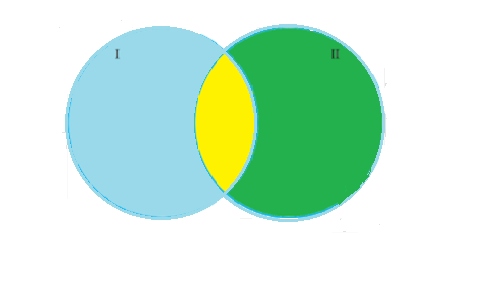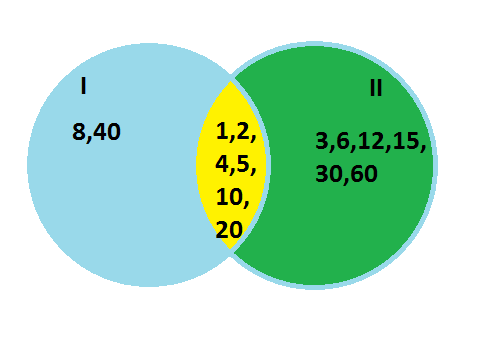
Write all the factors of $40$ in the blue circle and all the factors of $60$ in the green circle.
1). What are the factors written in the common part of both circles?
2). Which is the biggest common factor between $40$ and $60$?


Answer
501.9k+ views
Hint: A factor is a number or expression when multiplied with another number or expression to get the required expression or number. The given expression can contain one or more than one factor. Here we will find the factor of a given number by that number which divides the given number completely and leaving no remainder.
Here, we asked to find the factors of $40$ and $60$, also we need to find the common factors between them.
Complete step-by-step solution:
The number $1$ and itself will always be factors for the given number.
To calculate the factor, first, start with the least number and divide the given number with that least number. If we get the remainder as zero, we can consider it as a factor. If not, move to the next number.
First, we shall calculate the factors of $40$.
The factors of $40$ are \[1,2,4,5,8,10,20,\;40\] .
And then we shall calculate the factors of $60$.
The factors of $60$ are \[1,2,3,4,5,6,10,12,15,20,30,\;60\] .
We need to represent the factors in the diagram as shown.

1) The common factors of $40$ and $60$ are$1,2,4,5,10,20$ .
2) The biggest common factor between $40$ and $60$ is $20$.
Note: A factor is a number or expression when multiplied with another number or expression to get the required expression or number. The given expression can contain one or more than one factor.
During factorization, follow these steps one by one:
> Factor out any common terms from the given expression.
> Keep going until factorization cannot be done further.
> To check the answer that we can multiply by each factor with each other, if you get the
same expression then the calculated answer is correct otherwise not.
Here, we asked to find the factors of $40$ and $60$, also we need to find the common factors between them.
Complete step-by-step solution:
The number $1$ and itself will always be factors for the given number.
To calculate the factor, first, start with the least number and divide the given number with that least number. If we get the remainder as zero, we can consider it as a factor. If not, move to the next number.
First, we shall calculate the factors of $40$.
The factors of $40$ are \[1,2,4,5,8,10,20,\;40\] .
And then we shall calculate the factors of $60$.
The factors of $60$ are \[1,2,3,4,5,6,10,12,15,20,30,\;60\] .
We need to represent the factors in the diagram as shown.

1) The common factors of $40$ and $60$ are$1,2,4,5,10,20$ .
2) The biggest common factor between $40$ and $60$ is $20$.
Note: A factor is a number or expression when multiplied with another number or expression to get the required expression or number. The given expression can contain one or more than one factor.
During factorization, follow these steps one by one:
> Factor out any common terms from the given expression.
> Keep going until factorization cannot be done further.
> To check the answer that we can multiply by each factor with each other, if you get the
same expression then the calculated answer is correct otherwise not.
Recently Updated Pages
Master Class 11 Economics: Engaging Questions & Answers for Success

Master Class 11 English: Engaging Questions & Answers for Success

Master Class 11 Social Science: Engaging Questions & Answers for Success

Master Class 11 Biology: Engaging Questions & Answers for Success

Class 11 Question and Answer - Your Ultimate Solutions Guide

Master Class 11 Business Studies: Engaging Questions & Answers for Success

Trending doubts
What is meant by exothermic and endothermic reactions class 11 chemistry CBSE

10 examples of friction in our daily life

One Metric ton is equal to kg A 10000 B 1000 C 100 class 11 physics CBSE

Difference Between Prokaryotic Cells and Eukaryotic Cells

What are Quantum numbers Explain the quantum number class 11 chemistry CBSE

1 Quintal is equal to a 110 kg b 10 kg c 100kg d 1000 class 11 physics CBSE




